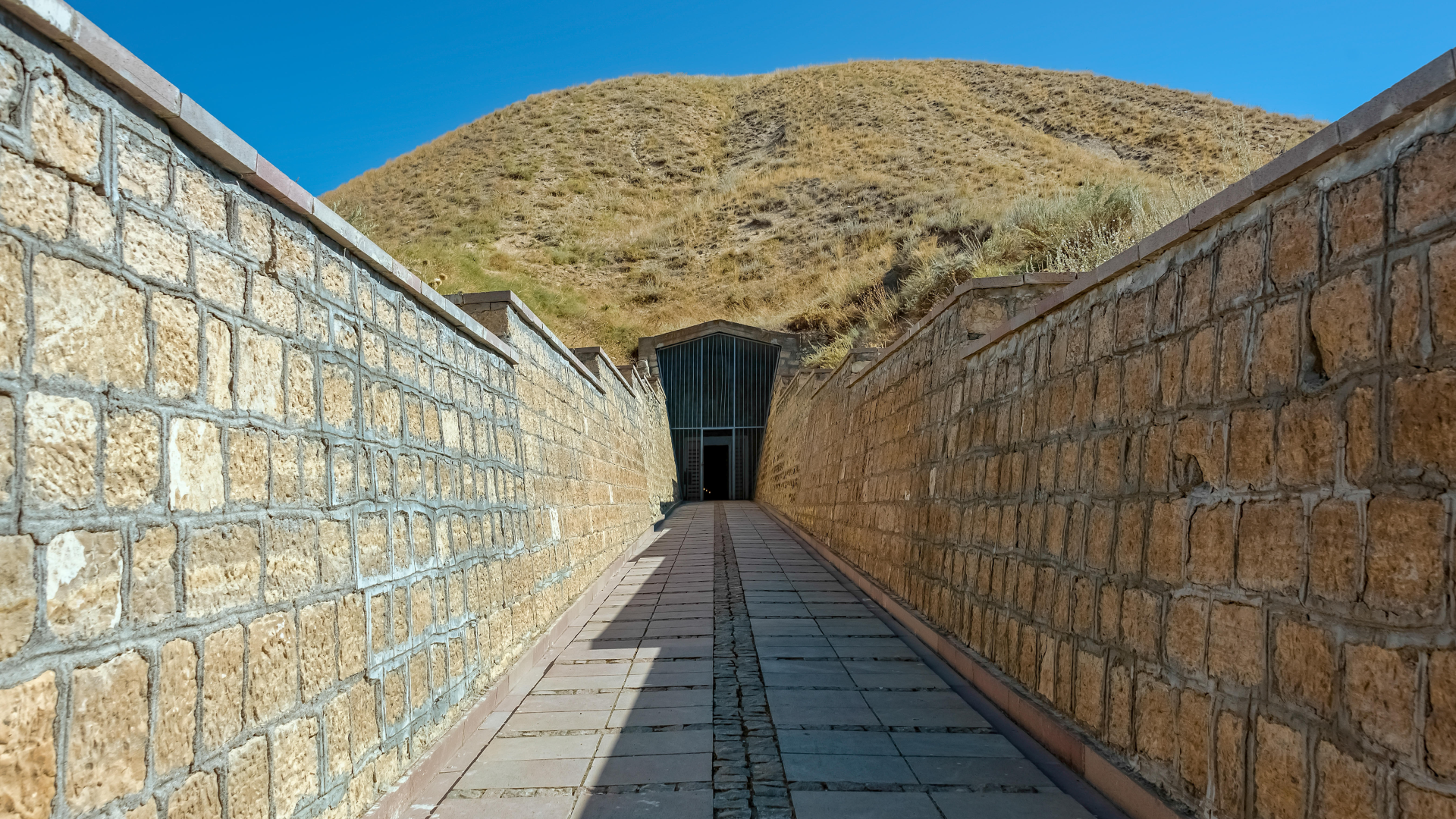2,800-year-old royal tomb discovered near King Midas' home in Turkey
Turkey's minister of culture and tourism announced the discovery of a new tomb in an eighth-century-B.C. city that was the homeland of King Midas.

Archaeologists have discovered an eighth-century-B.C. royal tomb of a relative of King Midas in the ancient city of Gordion, southwest of Ankara, Turkey. The burial mound contained dozens of rare artifacts and cremated human bones from an elite individual from the ancient kingdom of Phrygia.
"Based on these artifacts, we estimate that the person in the tomb chamber may be a member of the royal family associated with Gordion and Midas," Mehmet Nuri Ersoy, the Turkish minister of culture and tourism, said at a news conference Tuesday (June 3), the Turkish state-run news agency Anadolu Ajansı reported in Turkish.
Gordion was the capital of the Phrygian kingdom, which lasted from 1200 to 675 B.C. In the eighth century B.C., the kingdom was ruled first by Gordias, who was associated with the Gordian knot that Alexander the Great eventually cut, and then by his son Midas, who is famous for the story of turning everything he touched to gold.
But Gordion, like ancient Troy, was occupied many times over the centuries, leaving archaeologists with a tangled web of fortification walls, tombs and houses to dig through.
The largest tomb found at Gordion is called the "Midas Mound." One of more than 120 mounds, it was built around 740 B.C. and included the burial of a high-status person — possibly Midas' father, Gordias — in a log coffin on top of a purple textiles and surrounded by bronze treasures.
The newly announced tomb is the 47th such mound excavated at Gordion. The mound is about 26 feet (8 meters) tall and 200 feet (60 m) in diameter, archaeologist Yücel Şenyurt, co-director of the Gordion excavation, told Anadolu Ajansı in Turkish, and it includes the oldest cremation to date at the site.
"This shows the burial customs of the Phrygians," Şenyurt said, and "clearly shows us that the person buried here was not an ordinary person."
Get the world’s most fascinating discoveries delivered straight to your inbox.
Related: Ancient inscription reveals lost civilization in Turkey that may have defeated King Midas
Posted by TCKulturTurizm on
At the news conference, Ersoy said that the mound included a wooden burial chamber that measured 10.2 by 9.2 feet (3.1 by 2.8 m), along with dozens of bronze artifacts, including cauldrons and jugs, some of which were still hanging from iron nails on the walls of the burial chamber, Anadolu Ajansı reported.
"These artifacts that we have unearthed are the most concentrated group after the findings in the previously excavated Midas Mound," Ersoy said.
"It's possible that it belonged to someone in Midas's family because his tumulus is nearby," C. Brian Rose, Gordion excavation co-director and an archaeologist at the University of Pennsylvania, said at the news conference, as reported by Anadolu Ajansı. "What's really interesting is that it's a cremation burial," Rose said, because "this is the only example from the 8th century" at the site.
The newly discovered artifacts are now at the Gordion Museum, where they will be conserved and restored before being placed on display. Excavations at Gordion have been ongoing for 75 years, but archaeologists are nowhere near finished with their investigation of the numerous tombs and settlement structures.
"The area that has not yet been excavated is much larger than the area that has been excavated," Şenyurt said.
Alexander the Great quiz: How well do you know the famous king and conqueror from the ancient world?

Kristina Killgrove is a staff writer at Live Science with a focus on archaeology and paleoanthropology news. Her articles have also appeared in venues such as Forbes, Smithsonian, and Mental Floss. Kristina holds a Ph.D. in biological anthropology and an M.A. in classical archaeology from the University of North Carolina, as well as a B.A. in Latin from the University of Virginia, and she was formerly a university professor and researcher. She has received awards from the Society for American Archaeology and the American Anthropological Association for her science writing.
You must confirm your public display name before commenting
Please logout and then login again, you will then be prompted to enter your display name.


